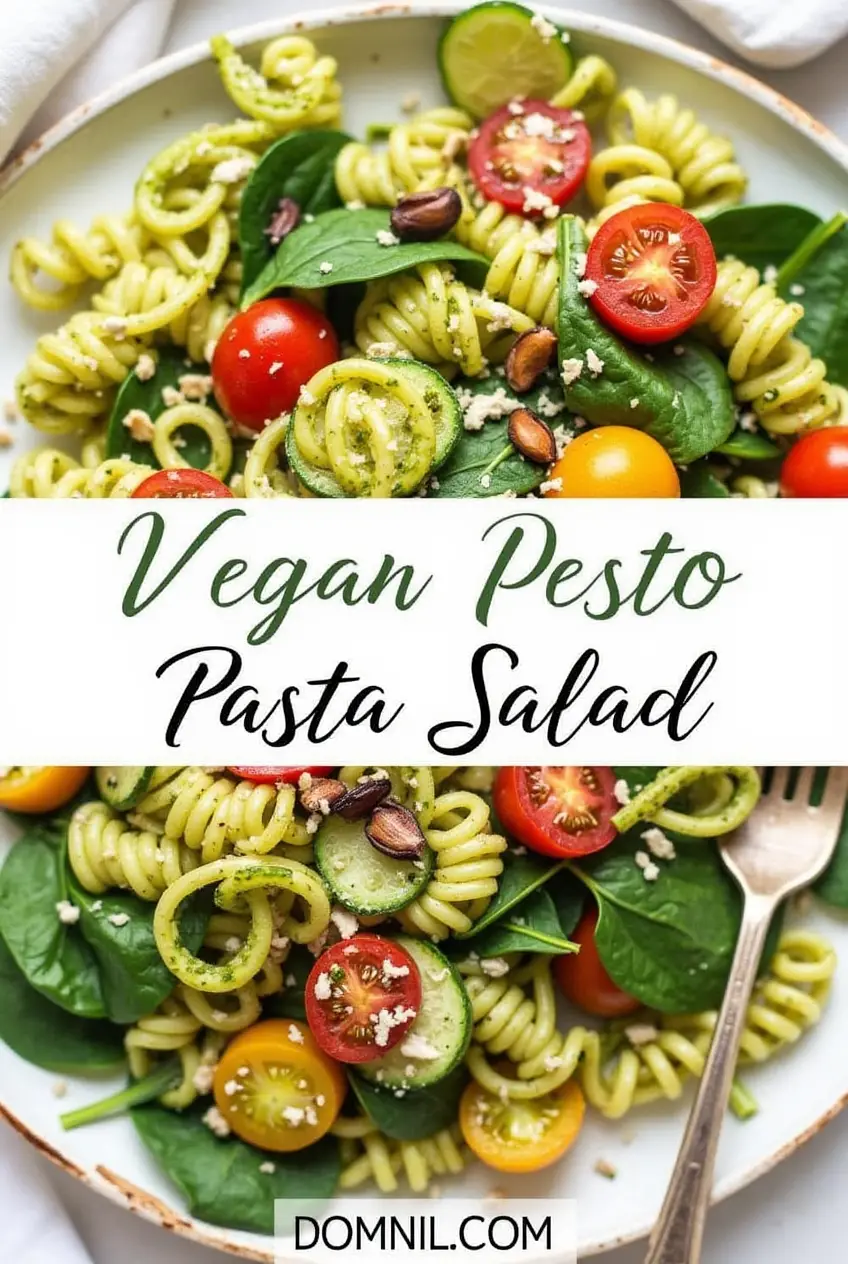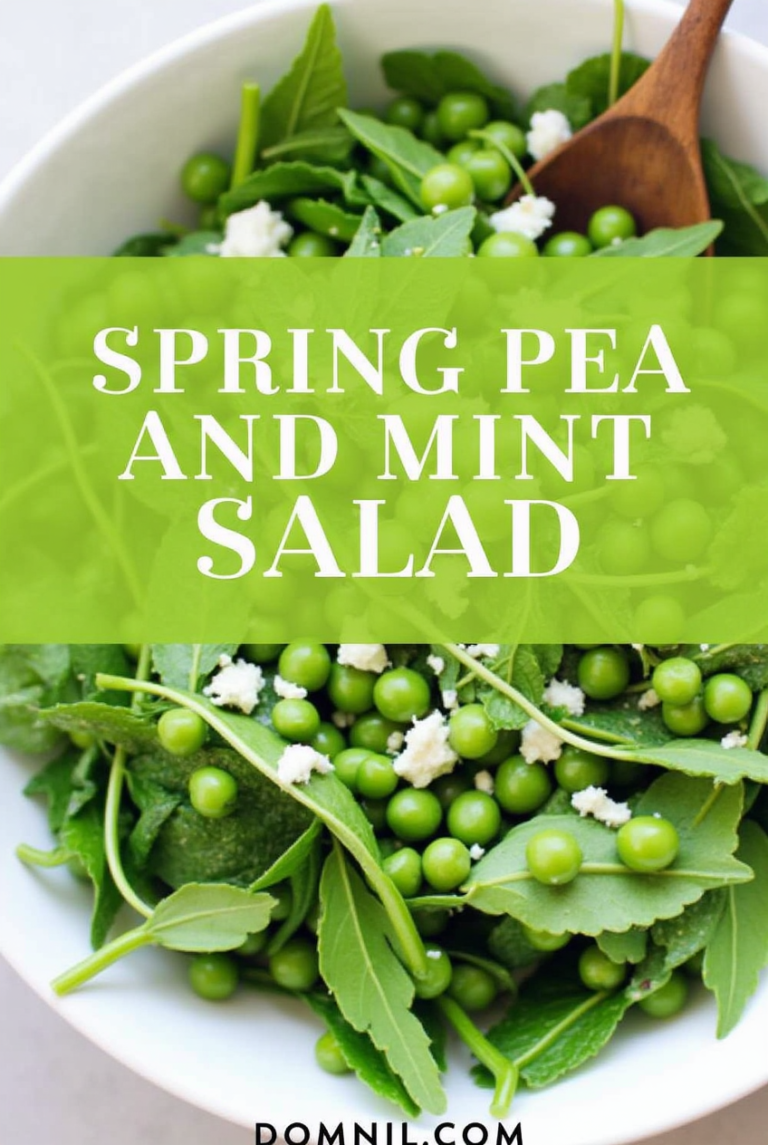Pesto Pasta Salad: A Delicious and Refreshing Dish
Introduction to Pesto Pasta Salad
What Makes Pesto Pasta Salad So Special?
Pesto pasta salad is one of those dishes that instantly feels like a warm summer hug on a plate. It’s vibrant, aromatic, and ridiculously easy to whip up. You know that feeling when you bite into something and every flavor hits you perfectly? That’s what pesto pasta salad delivers. It’s a combination of herby pesto sauce tossed with tender pasta, fresh veggies, and sometimes even chunks of cheese or nuts for that extra oomph.
One thing that makes this salad truly stand out is its versatility. Hosting a barbecue? Bring it along as a fresh side. Need a quick weeknight dinner? Boom, ready in under 30 minutes. Even better, it’s delicious whether served cold, warm, or at room temperature. Plus, the dazzling green of pesto makes the dish look as good as it tastes—talk about a feast for the eyes!
You can play around with the ingredients based on what’s in your fridge. Swap veggies, add proteins, or change the pasta shape—you really can’t go wrong. Whether you’re a seasoned chef or a kitchen newbie, this is a go-to recipe that guarantees a spot on your favorites list.
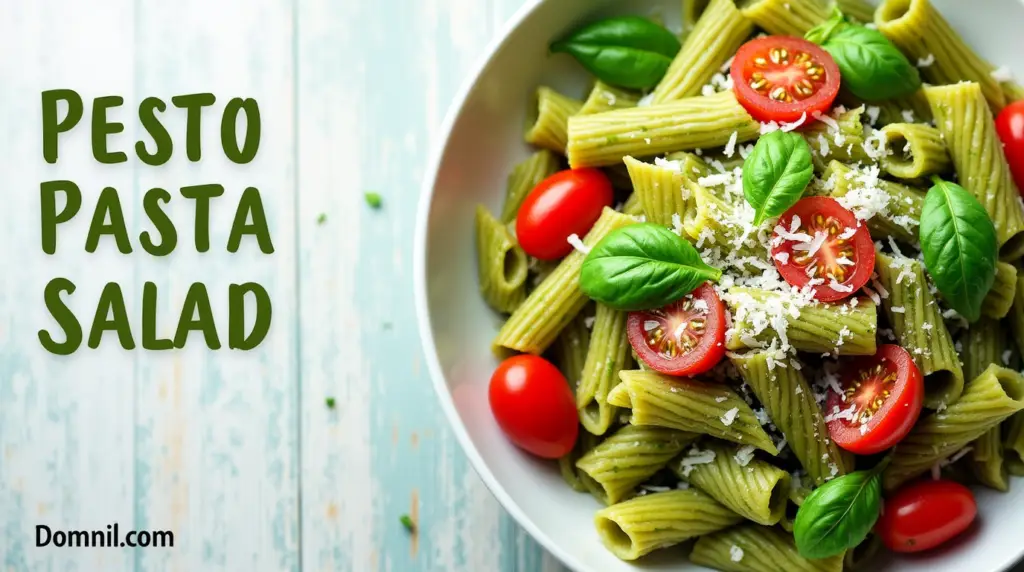
The Origins of Pesto and Its Role in Pasta Salad
Let’s take a quick trip back in time. Pesto hails from Genoa, Italy, in the region of Liguria. Traditionally made with fresh basil, garlic, pine nuts, Parmesan cheese, and olive oil, it’s been around for centuries. The word “pesto” itself comes from “pestare,” meaning “to pound” or “to crush,” referring to the traditional method of using a mortar and pestle.
Over time, pesto evolved and spread around the world, finding its way into countless recipes, including pasta salads. When paired with pasta, pesto transforms from a simple sauce into a luxurious, silky dressing that clings lovingly to every noodle, making each bite burst with flavor.
In pasta salads, pesto serves as both the flavor backbone and the moisture agent—meaning you don’t need gloppy mayonnaise or heavy dressings. Instead, you get something that’s light, bright, and packed with herbs. This marriage of Italian tradition and modern convenience is what makes pesto pasta salad a universal hit across generations and cultures.
Key Ingredients for the Perfect Pesto Pasta Salad
Choosing the Right Pasta
Not all pasta is created equal, especially when it comes to pasta salad. You need a shape that can hold onto that luscious pesto sauce without becoming soggy or falling apart. Short pasta shapes like fusilli, rotini, farfalle (aka bow ties), and penne are your best bets. Their nooks and crannies catch the pesto perfectly, delivering a flavorful punch with every bite.
If you’re feeling adventurous, try whole wheat or even legume-based pasta like chickpea or lentil pasta for added nutrients. Just remember, whatever pasta you choose, cook it al dente. That little bit of bite ensures the pasta holds up even after sitting in the fridge for a few hours.
A quick pro tip: After draining the pasta, rinse it briefly under cold water to stop the cooking process. This trick keeps your pasta firm and prevents it from becoming mushy when you toss it with the pesto and veggies later on.
Fresh Homemade Pesto vs Store-Bought Pesto
Here’s the big debate: Should you make your pesto or grab a jar off the shelf? Honestly, both options work, but there’s nothing quite like homemade pesto. It’s brighter, fresher, and you can tweak it to your liking. More garlic? Less cheese? Swap pine nuts for walnuts? Go wild!
Making pesto at home is also surprisingly easy. Toss fresh basil, garlic, nuts, Parmesan, and olive oil into a food processor, blend it up, and boom—you’ve got pesto. The flavor payoff is huge compared to the pre-made stuff.
That said, good-quality store-bought pesto can still make a fantastic pasta salad, especially when you’re short on time. Look for brands that use extra virgin olive oil and real Parmesan cheese. Avoid anything that lists soybean oil or other fillers high up on the ingredient list—they’ll taste bland and greasy.
Best Vegetables and Add-Ins for Extra Flavor
Now for the fun part—building your salad! The vegetables you choose can totally change the vibe of your pesto pasta salad. Some classic, delicious options include:
-
Cherry tomatoes (halved)
-
Cucumber (diced)
-
Red onion (thinly sliced)
-
Roasted red peppers (chopped)
-
Artichoke hearts
-
Black or Kalamata olives
-
Baby spinach or arugula
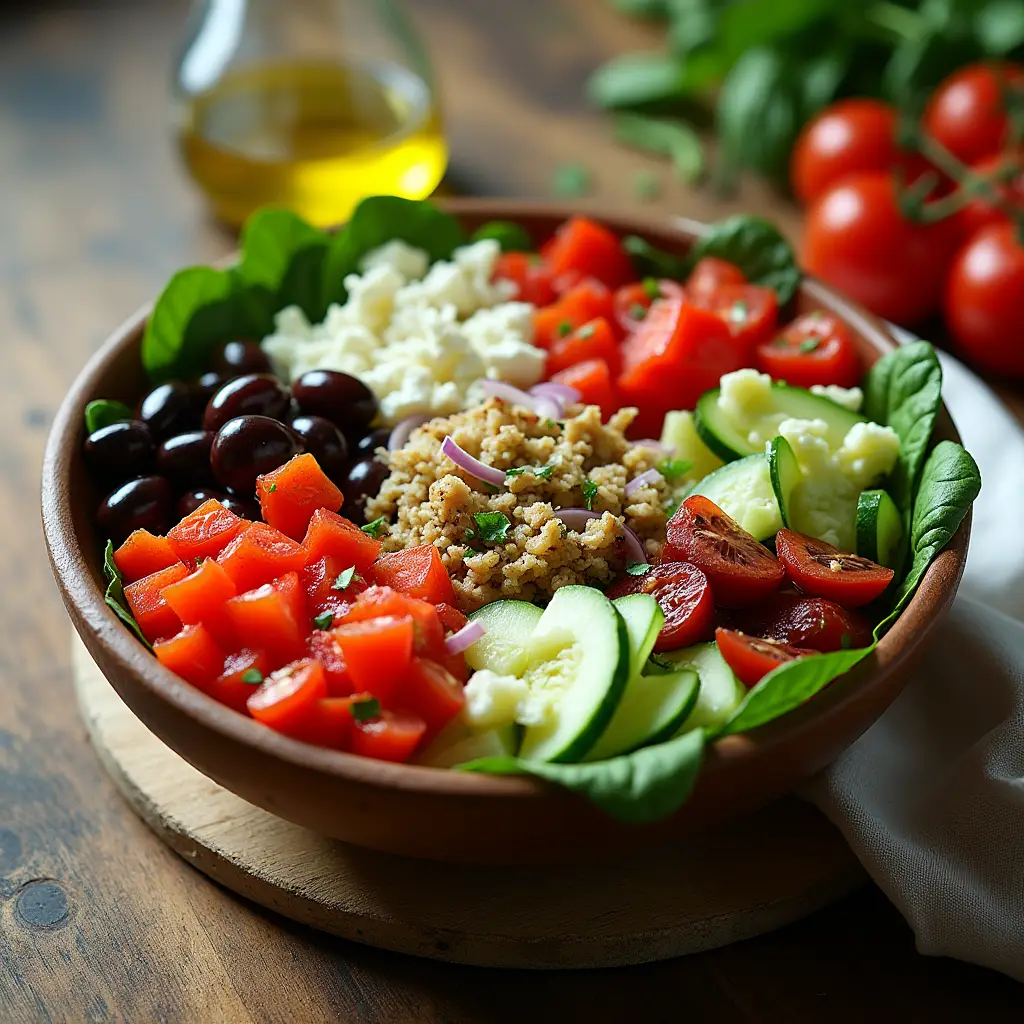
And if you want even more texture and richness, consider add-ins like:
-
Fresh mozzarella balls
-
Parmesan shavings
-
Toasted pine nuts or almonds
-
Grilled chicken or shrimp for extra protein
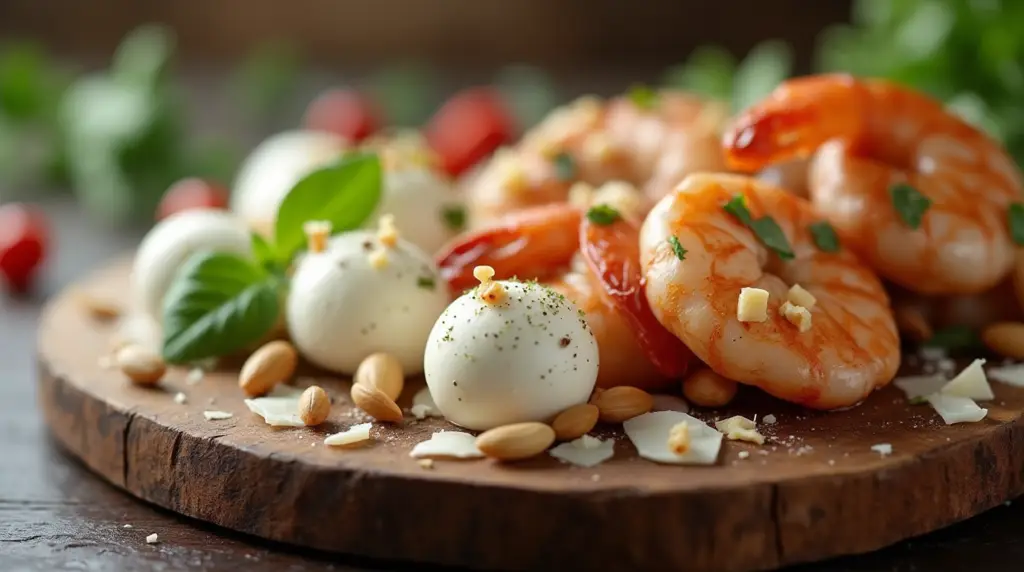
The key is balance: you want a variety of colors, textures, and flavors to keep every bite exciting. Think of it as a party on your plate where everyone gets an invite!
Delicious Variations of Pesto Pasta Salad
Vegan Pesto Pasta Salad
If you’re aiming for a plant-based twist, vegan pesto pasta salad is a total game-changer. Traditional pesto contains Parmesan cheese, but luckily, it’s super easy to make a dairy-free version that’s just as flavorful. Instead of cheese, nutritional yeast steps in to provide that nutty, savory flavor.
Here’s what you need for vegan pesto:
-
Fresh basil
-
Garlic
-
Pine nuts or walnuts
-
Nutritional yeast
-
Lemon juice
-
Olive oil
-
Salt and pepper
Blend these ingredients together, and you’ve got a vibrant, dairy-free pesto that will elevate your pasta salad. Throw in veggies like roasted zucchini, cherry tomatoes, and baby spinach for a hearty and colorful dish. Bonus points if you toss in some marinated tofu cubes or chickpeas for extra protein.
The best part? This version isn’t just for vegans—anyone who tries it will appreciate the bright, clean flavors that don’t rely on dairy for their deliciousness.
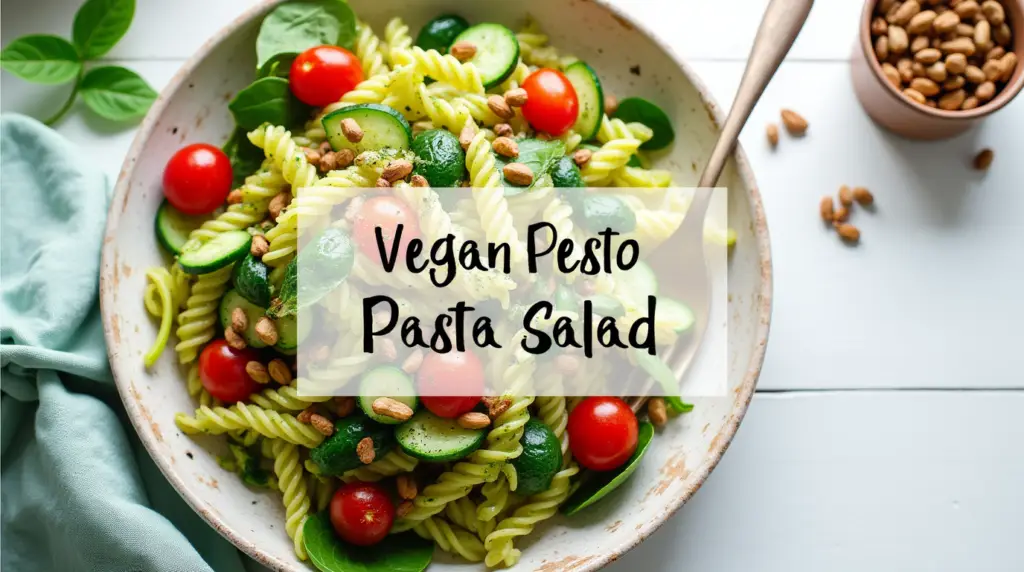
Chicken Pesto Pasta Salad
Want to take your pesto pasta salad from a side dish to a full-blown meal? Add some juicy, grilled chicken! Chicken pesto pasta salad is satisfying, protein-packed, and ridiculously tasty.
To keep things simple, season your chicken breasts with salt, pepper, and a drizzle of olive oil. Grill or bake until fully cooked, then let them rest before slicing into thin strips. Toss the chicken into the pasta along with your pesto and veggies for a complete, hearty meal that’s perfect for lunch, dinner, or even a picnic.
You can also marinate the chicken beforehand in a little pesto for even more flavor. Trust me, every bite will be bursting with herby, garlicky goodness.

Mediterranean-Inspired Pesto Pasta Salad
If you’re craving something a little more exotic, Mediterranean-style pesto pasta salad is where it’s at. Think sun-dried tomatoes, Kalamata olives, artichoke hearts, crumbled feta cheese, and even a handful of peppery arugula.
The salty tang of the feta combined with the briny olives and the richness of the pesto creates an explosion of Mediterranean flavors. To make it even more authentic, add a squeeze of fresh lemon juice and a sprinkle of oregano before serving.
This variation feels like a mini European vacation in every forkful—a refreshing and delicious twist you’ll definitely want to make again and again.

Tips for the Best Pesto Pasta Salad
How to Keep Pasta Salad Fresh
Nobody likes a dried-out pasta salad, right? Keeping your pesto pasta salad fresh is all about managing moisture and flavors smartly.
Here’s the secret: Reserve a little extra pesto or olive oil and stir it into the salad right before serving. Pasta tends to soak up dressing as it sits, so this trick brings the salad back to life, making it glossy and flavorful again.
Also, store the pasta salad in an airtight container in the fridge. If you’re making it for an event, prep everything the night before, but don’t fully assemble it until closer to serving time to maintain peak freshness and texture.
Another tip? Toss in juicy ingredients like tomatoes just before serving so they don’t make the salad watery.
Best Pasta Salad Serving Ideas
Pesto pasta salad isn’t just a sidekick—it can totally be the star of your table with the right presentation. Here are some fun serving ideas:
-
Mason Jar Salads: Perfect for meal prep or picnics! Layer the pesto at the bottom, then pasta, then veggies. Shake it up when you’re ready to eat.
-
Large Platter: Arrange the pasta salad beautifully with some extra fresh basil leaves, Parmesan shavings, and lemon wedges for that wow factor.
-
Individual Bowls: Scoop individual portions and top each one with a sprinkle of nuts or seeds for a personal touch.
Whether you’re serving at a summer cookout, a casual dinner, or even a fancy brunch, a little attention to presentation can make your pesto pasta salad unforgettable.
Nutritional Benefits of Pesto Pasta Salad
Health Benefits of Basil and Olive Oil
Beyond tasting amazing, pesto brings serious health perks to your plate. Fresh basil is loaded with antioxidants, vitamins A, K, and C, and has anti-inflammatory properties. It’s basically a leafy green superhero hiding in your salad.
Then there’s the olive oil—especially if you use extra virgin olive oil. It’s rich in monounsaturated fats (the good kind!) and packed with antioxidants. Regular consumption of olive oil has been linked to heart health, improved cholesterol levels, and even better brain function.
Combine the two, and you’re not just making your meal delicious—you’re fueling your body with powerhouse ingredients.
Adding Protein and Fiber for a Balanced Meal
Want to turn your pesto pasta salad into a complete, nutritious meal? Easy—just amp up the protein and fiber.
Some fantastic protein-boosting add-ins include:
-
Grilled chicken or shrimp
-
Hard-boiled eggs
-
Chickpeas
-
Tofu cubes
-
Mozzarella or feta cheese
For fiber, load up on veggies like spinach, bell peppers, and broccoli. You can also use whole-grain or legume-based pasta, which naturally contains more fiber than regular white pasta.
Balancing protein, fiber, and healthy fats helps keep you full longer, stabilizes your blood sugar, and makes this dish way more satisfying overall.
Step-by-Step Guide to Making Pesto Pasta Salad
Preparing the Pasta
First things first: boil your pasta according to the package directions, but always aim for that al dente texture. No one wants a mushy pasta salad! Salt your water generously—it should taste like the sea. This tiny step adds tons of flavor to your noodles from the inside out.
Once cooked, drain the pasta and rinse it under cold water to cool it down quickly and halt the cooking process. This helps maintain that perfect texture. Toss the cooled pasta in a little bit of olive oil to prevent sticking while you prep the other ingredients.
Crafting the Pesto Sauce
If you’re making pesto from scratch (highly recommended), here’s a quick rundown:
Ingredients:
-
2 cups fresh basil leaves
-
2 cloves garlic
-
¼ cup pine nuts
-
½ cup freshly grated Parmesan
-
½ cup extra virgin olive oil
-
Salt and pepper to taste
Instructions:
-
Toss basil, garlic, and pine nuts into a food processor.
-
Pulse a few times to break them up.
-
With the machine running, slowly stream in the olive oil until smooth.
-
Add Parmesan, pulse a few more times, and season with salt and pepper.
Adjust the consistency by adding a bit more olive oil if needed. You want it loose enough to coat your pasta but thick enough to cling nicely.
Assembling the Salad
Now comes the fun part: putting everything together! In a large bowl, combine your cooked pasta, chopped veggies, and a generous spoonful of that dreamy pesto. Toss gently to coat every piece evenly.
Taste as you go—maybe you’ll want an extra pinch of salt or a little more pesto. Once everything’s well mixed, sprinkle with Parmesan shavings or toasted nuts for a final flourish.
Cover and chill for at least 30 minutes before serving to let all those wonderful flavors meld together.
Common Mistakes to Avoid
Overcooking Pasta
One of the biggest mistakes you can make when whipping up a pesto pasta salad? Overcooking the pasta. It might seem like a minor detail, but trust me, it can completely wreck the dish. Overcooked pasta becomes mushy, falls apart, and won’t hold up when tossed with the pesto and veggies.
The key is cooking the pasta al dente—firm to the bite. Follow the package instructions but start testing a minute or two early. When in doubt, err on the side of slightly undercooked rather than overcooked because the pasta will absorb some moisture from the pesto and toppings as it sits.
Once your pasta is done, immediately drain and rinse it under cold water to stop the cooking process. This step locks in the perfect texture and prevents it from becoming gummy or sticky in your salad.
If you master the art of perfectly cooked pasta, you’re already halfway to a show-stopping pesto pasta salad!
Using Low-Quality Ingredients
Pesto pasta salad is a simple dish, which means every ingredient really matters. Using cheap, low-quality ingredients can dull the vibrant flavors you’re aiming for.
Here’s where it’s crucial to invest:
-
Pasta: Choose a quality brand that holds its shape well after cooking.
-
Olive Oil: Extra virgin olive oil will give your pesto a rich, fruity depth.
-
Cheese: Use real Parmesan or Pecorino Romano—not the pre-grated kind that comes in a can.
-
Basil: Fresh, fragrant basil is non-negotiable. Avoid wilted or discolored leaves.
-
Nuts: Fresh pine nuts or a good substitute like walnuts add a rich, buttery crunch.
Good ingredients don’t just taste better—they transform a simple salad into something truly memorable. Think of it like building a house: If your foundation isn’t strong, the whole thing crumbles.
Storing and Reheating Pesto Pasta Salad
How Long Does Pesto Pasta Salad Last?
One of the beauties of pesto pasta salad is how well it stores. Properly refrigerated in an airtight container, it can last up to 3–5 days. However, its peak freshness is usually within the first 48 hours.
Because pasta continues to soak up moisture and flavors over time, you might notice that the salad becomes a little drier as the days go by. That’s completely normal! A simple drizzle of olive oil or a spoonful of fresh pesto stirred in can easily revive it.
If you’re prepping for a party, you can make the salad a day in advance—just hold off on adding super juicy ingredients like tomatoes until the last minute to avoid sogginess.
Reheating Tips for Best Taste
While pesto pasta salad is generally served cold or at room temperature, some people like to enjoy it slightly warmed. If you fall into that camp, here’s how to reheat it properly without killing the bright flavors:
-
Microwave: Warm it gently in 20–30 second bursts, stirring in between, until just slightly heated through. Don’t overheat, or the pesto’s delicate basil will turn bitter.
-
Stovetop: Place the pasta in a skillet over low heat, adding a splash of water or olive oil to loosen it up. Stir constantly to prevent sticking and uneven heating.
Warming it lightly can actually bring out the aroma of the pesto even more, but remember: low and slow is the way to go!
Perfect Pairings with Pesto Pasta Salad
Best Drinks to Serve
A great dish deserves a great drink, right? Pesto pasta salad pairs wonderfully with a variety of beverages. Here are some ideas to get you started:
-
White Wine: A crisp Sauvignon Blanc or Pinot Grigio cuts through the richness of the pesto beautifully.
-
Sparkling Water: Infuse with lemon or cucumber for a refreshing, non-alcoholic option.
-
Light Beer: A pilsner or wheat beer complements the herby notes without overpowering them.
-
Iced Tea: Fresh, unsweetened iced tea with a hint of mint pairs perfectly with the salad’s vibrant flavors.
Choosing the right drink elevates your meal from simple to sensational. Plus, it’s just more fun to eat when you have a refreshing beverage in hand!
Tools Necessary for Making Pesto Pasta Salad
Essential Kitchen Tools You’ll Need
Making a mouth-watering pesto pasta salad doesn’t require a fancy setup, but having the right tools can make the process a whole lot smoother and more enjoyable. Here’s your ultimate checklist:
1. Large Pot for Boiling Pasta
You’ll need a big pot to boil your pasta properly. A large pot ensures that the pasta has plenty of room to move around, cooking evenly and not sticking together. Always remember to salt your water generously—it’s your first chance to add flavor!
Pro Tip: A pot with a built-in strainer lid can make draining even easier.
2. Colander or Strainer
Once the pasta is cooked, you’ll need a good colander to drain it. Choose a sturdy one with fine holes, so none of your smaller pasta shapes slip through. After draining, you’ll want to rinse the pasta with cold water to stop the cooking process immediately.
3. Food Processor or Blender (for Pesto)
If you’re making homemade pesto (which you definitely should if you can), a food processor is your best friend. It blends basil, garlic, nuts, and oil into a silky, flavorful sauce in seconds. A high-powered blender can also do the trick if you don’t have a food processor.
Handy Tip: A small food processor is perfect for quick pesto batches without the hassle of cleaning a huge machine.
4. Sharp Chef’s Knife and Cutting Board
You’ll need a reliable chef’s knife to chop all your add-ins—like cherry tomatoes, cucumbers, roasted peppers, or anything else you decide to toss in. A good-quality cutting board helps keep your workspace safe and tidy.
Bonus Tip: If you want to impress with presentation, slice your veggies neatly and uniformly!
5. Mixing Bowls
A set of large mixing bowls is a must. You’ll use them to toss the pasta, pesto, and all your fresh ingredients together without spilling everything all over your counter. Stainless steel, glass, or durable plastic bowls all work great.
Quick Hack: Use a slightly larger bowl than you think you’ll need—tossing is way easier when you have room to move everything around.
6. Wooden Spoon or Silicone Spatula
You’ll need something sturdy yet gentle for mixing the salad. A wooden spoon or silicone spatula helps you fold everything together without breaking the pasta or crushing delicate ingredients like tomatoes and mozzarella balls.
7. Measuring Cups and Spoons
Precision matters, especially when making pesto. Proper measuring tools ensure you get the right balance of olive oil, cheese, nuts, and basil for a perfectly creamy and flavorful sauce.
8. Airtight Containers (for Storing)
If you plan to make your pesto pasta salad ahead of time or store leftovers, you’ll need good airtight containers. Glass containers are a fantastic option because they don’t absorb odors, but BPA-free plastic works well too.
Extra Tip: Choose shallow containers so the salad cools evenly and quickly in the fridge.
Optional but Helpful Tools
-
Salad Spinner: If you’re adding greens like spinach or arugula, a salad spinner makes it quick and easy to wash and dry them thoroughly.
-
Citrus Juicer: Fresh lemon juice brightens up pesto pasta salad beautifully, and a juicer makes getting every last drop effortless.
-
Microplane or Fine Grater: For grating fresh Parmesan cheese right onto your salad. Freshly grated cheese has way more flavor than pre-packaged stuff!
Final Thoughts on Tools
Having these tools on hand will make preparing pesto pasta salad quick, efficient, and a lot more fun. With a good setup, you’ll spend less time fussing and more time enjoying the vibrant, herby deliciousness of your homemade dish.
Even if you only have the basics, don’t stress—pesto pasta salad is forgiving, and it’s all about making it your own!
Complementary Side Dishes
Even though pesto pasta salad can totally stand on its own, pairing it with a few complementary side dishes can turn it into a full feast. Here are some delicious ideas:
-
Grilled Vegetables: Eggplant, zucchini, and bell peppers charred on the grill add a smoky, savory dimension.
-
Garlic Bread: Because who doesn’t love more carbs? Crunchy garlic bread is the ultimate pasta partner.
-
Caprese Salad: Fresh tomatoes, mozzarella, basil, and balsamic glaze mirror the pesto flavors beautifully.
-
Antipasto Platter: Cured meats, cheeses, olives, and marinated veggies add variety and make it a real Italian-themed spread.
With the right sides, your pesto pasta salad becomes the centerpiece of an unforgettable meal.
Conclusion
Pesto pasta salad isn’t just another side dish; it’s a celebration of fresh ingredients, bold flavors, and creative possibilities. Whether you’re going classic, vegan, or Mediterranean, this dish can easily fit into any meal, any occasion, and any season.
With the right pasta, a vibrant pesto, fresh add-ins, and a few key tips under your belt, you’ll have a go-to recipe that everyone will request again and again. Don’t be afraid to experiment, tweak ingredients to your liking, and most importantly—have fun with it!
Remember, food is meant to bring joy, and this pesto pasta salad will do exactly that. Happy cooking!
FAQs
Can I freeze pesto pasta salad?
Freezing pesto pasta salad isn’t ideal. The pasta texture changes dramatically once thawed, becoming mushy, and the pesto can separate. It’s best to enjoy it fresh or refrigerated for a few days.
What is the best pasta for pesto pasta salad?
Short, sturdy pasta shapes like fusilli, rotini, penne, or farfalle work best. They trap the pesto in their twists and folds, ensuring every bite is flavorful.
How do I make a creamy pesto pasta salad?
To make it creamy, simply mix a spoonful of Greek yogurt, sour cream, or a splash of cream into your pesto before tossing it with the pasta. It adds a luscious texture without overpowering the basil flavor.
Is pesto pasta salad healthy?
Yes! When made with fresh pesto, lots of veggies, and healthy add-ins like grilled chicken or legumes, pesto pasta salad can be a very nutritious meal packed with fiber, protein, and healthy fats.
Can I prepare pesto pasta salad a day in advance?
Absolutely. In fact, it often tastes even better after sitting for a few hours. Just add delicate ingredients like tomatoes or leafy greens right before serving to keep everything fresh.

